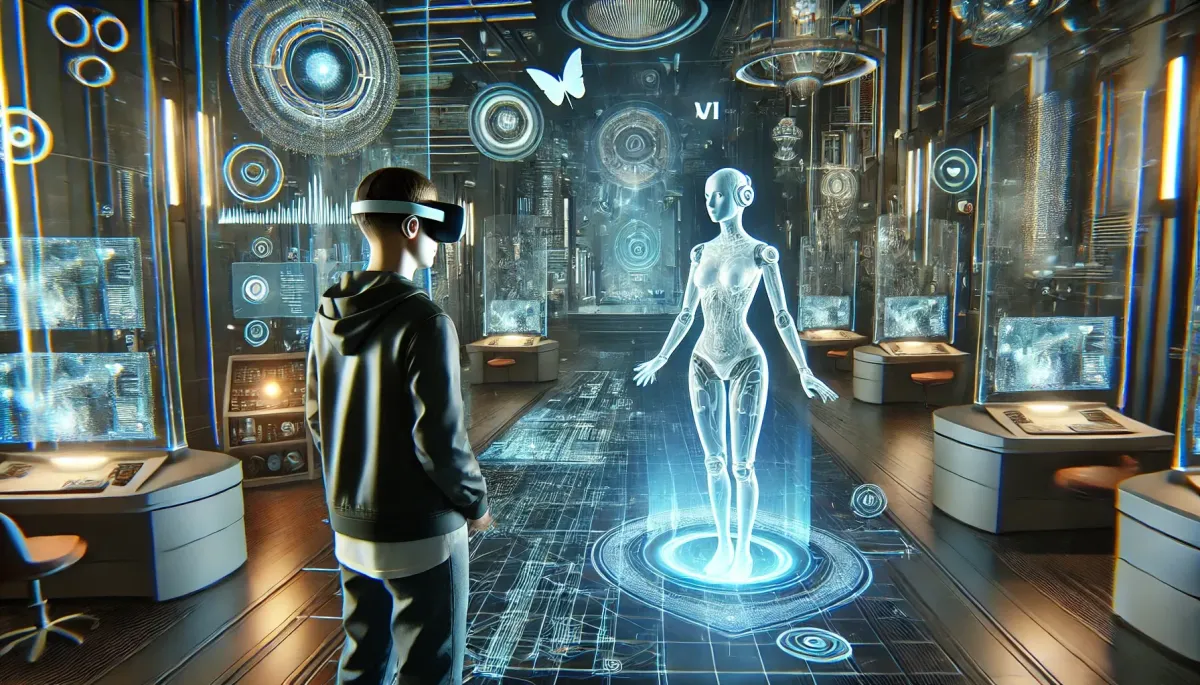
The Future of Voice AI in Virtual Reality: Creating Immersive Experiences
The Future of Voice AI in Virtual Reality: Creating Immersive Experiences
Virtual reality (VR) has transformed how we engage with digital environments, but integrating voice AI takes this immersion to an entirely new level. By enabling intuitive voice interactions, personalizing experiences, and enhancing accessibility, voice AI is shaping the next evolution of VR.
Hands-Free Interaction for a Seamless Experience
In traditional VR, navigating menus or issuing commands often requires clunky controllers, disrupting the immersive flow. Voice AI removes this barrier, allowing users to interact naturally with virtual environments using voice commands.
Example: In a VR travel experience, users can say, "Take me to the Eiffel Tower," and instantly be transported there, eliminating the need for tedious menu navigation.
Personalized Virtual Worlds
Voice AI's ability to recognize and adapt to user preferences enhances the personalization of VR experiences. The technology learns from user feedback to tailor environments in real time.
Example: In a fitness VR app, users might say, "Increase intensity" or "Play upbeat music," prompting immediate adjustments to their workout session.
Intelligent Virtual Characters
Voice AI powers non-player characters (NPCs) in VR, enabling them to respond dynamically to user queries and adapt their behavior based on context. This makes VR worlds feel alive and interactive.
Example: In a language-learning VR simulation, users can practice conversations with AI-powered virtual tutors who adjust difficulty levels based on the user’s fluency.
Accessibility for All
Voice AI makes VR accessible to users with physical disabilities by enabling voice-driven navigation and interactions. This inclusivity expands VR's reach and allows more people to engage meaningfully with virtual environments.
Example: A user with limited mobility can explore a virtual museum by simply saying, "Go to the next exhibit," ensuring an effortless and enriching experience.
Real-Time Support and Guidance
Voice AI provides immediate assistance in VR environments, making it particularly useful for learning and problem-solving.
Example: In a VR first-aid training program, users can ask, "What’s the next step for treating a burn?" and receive real-time instructions without breaking immersion.
Enhancing Multiplayer Communication
For multiplayer VR gaming or collaborative work environments, voice AI improves communication by managing conversations and providing real-time feedback.
Example: In a VR escape room, voice AI acts as a game guide, responding to team queries like, "What clue did we miss?" and keeping everyone on track.
Industry Applications of Voice AI in VR
Voice AI in VR is revolutionizing industries like gaming, education, healthcare, and corporate collaboration:
Gaming: Voice AI can provide hints, narrate storylines, or facilitate multiplayer coordination.
Education: Virtual classrooms can offer personalized feedback during lessons, enhancing engagement.
Healthcare: Patients in VR therapy can receive guided instructions and motivational support.
Corporate: Virtual meetings can integrate voice AI to assign tasks or manage real-time translations.
Conclusion: Voice AI + VR = The Future
By combining the immersive capabilities of VR with the intelligence of voice AI, virtual environments become smarter, more accessible, and more interactive. From simplifying navigation to enhancing collaboration, the potential for innovation is boundless. As voice AI continues to evolve, its integration with VR will redefine how we interact with digital worlds—turning them into intuitive and transformative spaces.
Whether you're a gamer seeking dynamic NPCs or a healthcare provider offering virtual therapy, the synergy of voice AI and VR is shaping the future of experiences.
STAY UPDATED
Sign up to be the first to find out when we add new languages, new bots, new capablities, and more. We respect your privacy and will never share your information with any third-party vendors.
Sign up to be the first to find
out when we add new
languages, new bots, new
capablities, and more. We
respect your privacy and will
never share your information
with any third-party vendors.




